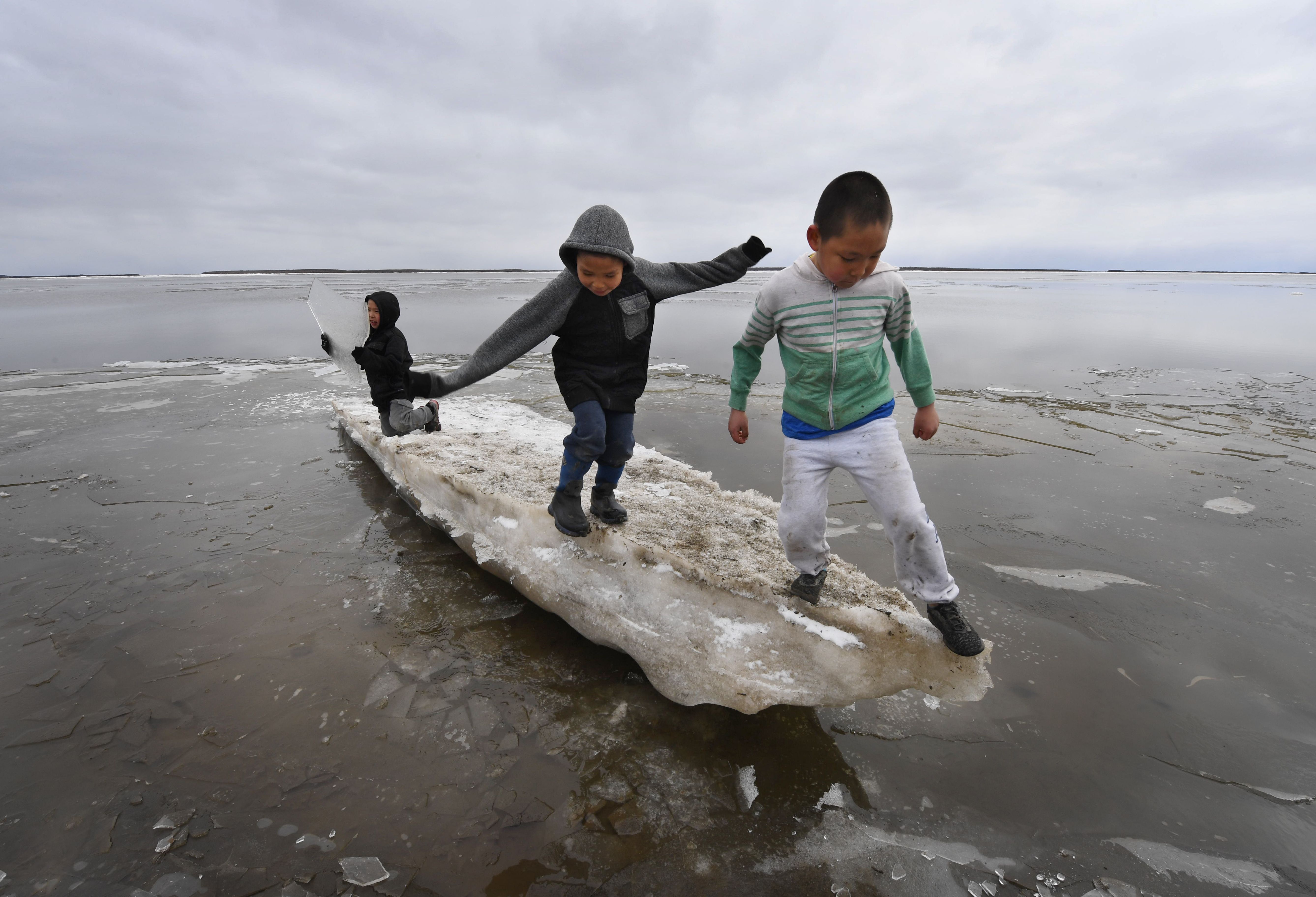‘We Fear for Our Children:’ Alaska Natives Speak out in Climate Change Report

Credit to Author: Maddie Stone| Date: Wed, 11 Dec 2019 13:11:57 +0000
Few communities on Earth are experiencing the effects of climate change as profoundly as Alaska Natives. Now, their voices and experiences are being amplified in a new climate report by the National Oceanic Atmospheric Administration that highlights how dramatic sea ice losses and ecosystem shifts are impacting their food security and traditional way of life.
At the American Geophysical Union annual meeting in San Francisco today, NOAA released its 2019 “Arctic Report Card,” an annual status update on the changes unfolding up north as the Arctic warms at breakneck speed. Now in its 14th year, the report contains the usual mix of dismal news on retreating sea ice, thawing permafrost, and Greenland’s ongoing meltdown. But it also drew special focus to Alaska’s Bering Sea, with several chapters detailing the dramatic, warming-fueled changes unfolding across the region, changes NOAA describes as “disquieting.” To put a human face on the ongoing transformation, the report also includes a chapter authored by 10 indigenous elders representing communities across the Bering, a first for the annual report.
“Our seals are dying, our fish are going belly up before they spawn,” said Jerry Ivanoff, a Yup'ik man from the Alaskan village of Unalakleet and a co-author on the report, in an interview. “Our killer whales are showing up on the beach. We’ve never had 200 seals [dead] on a beach stretch before. This year we had.”
The testimonials in NOAA's new report make clear just how disquieting climate change is from the front lines. As it explores in detail, life across the Bering Sea has become almost unrecognizable in recent years.
Many of the ongoing changes can be traced back to ice. Sea ice in the Bering has been thinning and retreating for years, but in 2018 and 2019, the losses kicked into overdrive. The past few years saw sea ice struggle to form in the fall, hit record low maximum extents in the winter, and break up early in the spring. In late January 2019, a series of cyclones marched through the Bering, bringing warm air and fierce winds and triggering an unprecedented wintertime ice collapse.
Sea ice is a necessary precursor for the “cold pool”, a vast blob layer of near-freezing water that forms along the Bering seafloor as ice melts in the spring, providing shelter for Arctic species and keeping out warm-loving fish from the south. In 2018, for the first time in memory, the cold pool didn’t form, and in 2019 it was dramatically diminished. This has allowed southern species like Pacific cod and walleye pollock to migrate north in huge numbers, possibly contributing to the widespread seabird die-offs that have occurred across the Bering over the last few years.
“The latest NOAA survey results are showing a really rapid increase in northward movement [of southern fish],” said Kevin Wood of NOAA’s Pacific Marine Environmental Laboratory, during a NOAA press conference at AGU today. “I think in the long run, we’re going to see more and more of this.”
All of these changes are having profound effects on the more than 70 indigenous communities that call the Bering home. As Mellisa Johnson, the Executive Director of the Bering Sea Elders Group, explained during the AGU press conference, the sea ice that once offered a stable platform for hunting and fishing is becoming dangerously thin, meaning hunters are having difficulty accessing the traditional foods their communities depend on to get through the long, harsh winter.
“The sea ice and the snow helps us maintain our indigenous way of life,” Johnson said. “With that being taken away each year and within the last three years being taken away significantly, we haven’t had the opportunity as the past to continue having vast amounts of seal, walrus [and] different fish. We’ve had significant impacts to our food sources that we can’t buy in a local grocery store.”
At the same time that communities are finding it more difficult to obtain food, they’re becoming more isolated. Several traditional sea ice roads people once used to travel between communities no longer exist, while the wintertime ice runway off the remote island community of Diomede can no longer support a plane in the winter. An increase in wintertime rainfall is leaving other runways covered in ice, making it unsafe for planes to land and further isolating communities that lack road access.
Meanwhile, with temperatures rising rapidly, once-frozen ground is turning to mush and crumbling into the sea, taking out vital infrastructure along with it.
One of the biggest concerns elders voiced in the new report is that the changes are occurring so quickly it’s becoming difficult to pass traditional knowledge along to younger generations. This, combined with increases in boating traffic and industrial exploitation up north as ice retreats, threatens to further erode the identity of communities that have managed to hold onto their culture despite centuries of colonial repression.
“By adapting as we always have, we continue to hunt, fish, and harvest from the ocean and land,” elders write in the report. “But, we fear for our young people.”
This article originally appeared on VICE US.